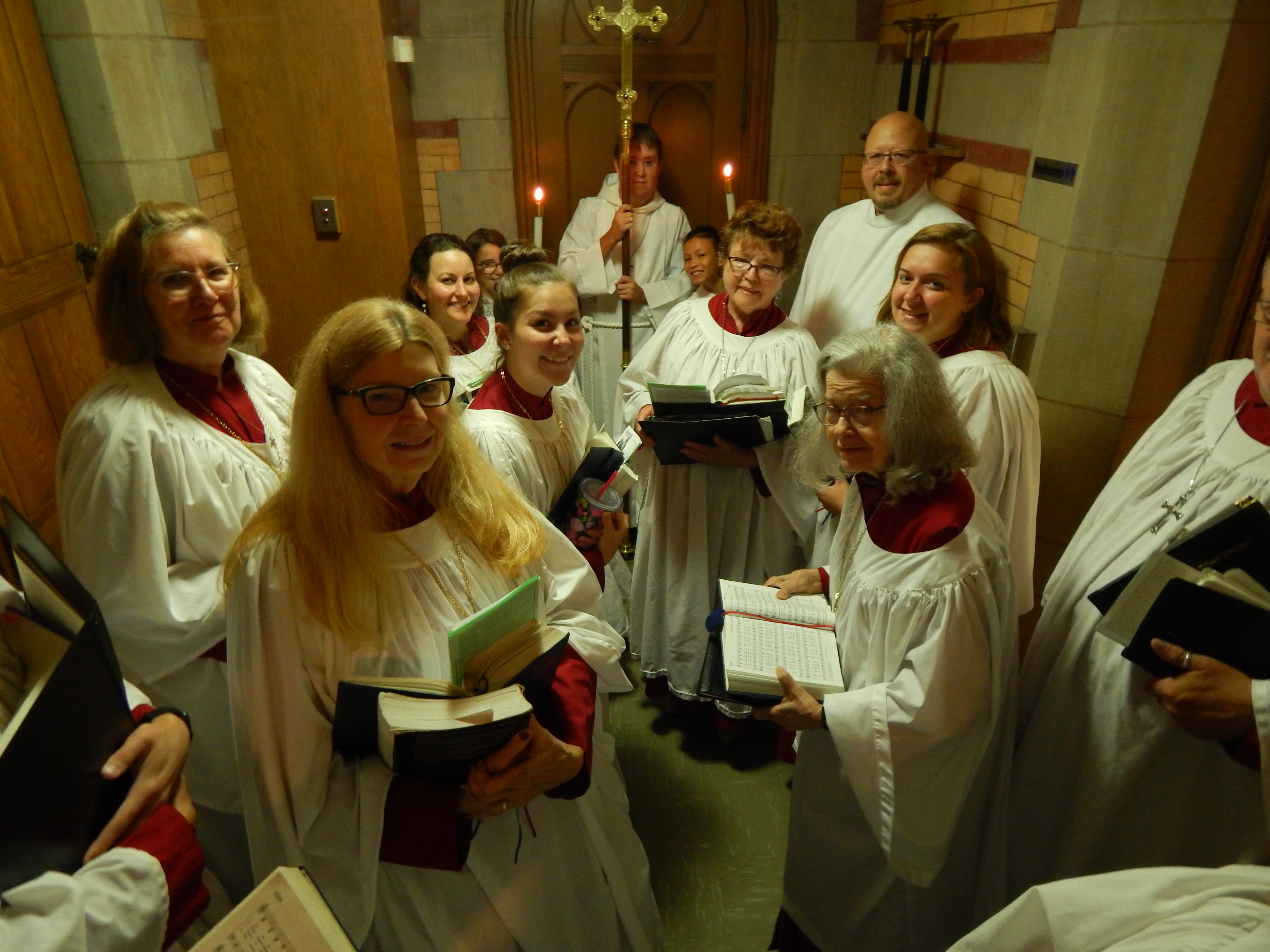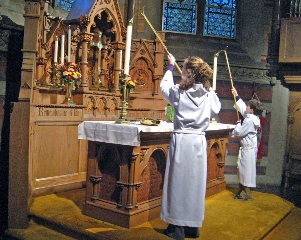The ministry of acolytes is a service ministry within the Church that comes to us from ancient times. The word “Acolyte” comes from the Greek word akolouthos, which means “a servant or attendant who waits continually upon another.” From those days until now acolytes have been faithful and conscientious men, women, boys and girls, who serve Christ Jesus in the celebration of liturgical functions. Their service helps to keep the liturgy flowing smoothly and opens the way for worshipers to participate without distraction. What an acolyte does is both a personal offering of time and energy to God and also a communal responsibility. While the roles at a specific liturgy may vary, the crossbearer (crucifer), torchbearer, thurifer and boat bearer are all considered acolytes properly speaking.
Younger boys and girls are encouraged to consider serving as acolytes starting at around the age of 10, sometimes younger. This ministry is by no means limited to the young. Adults are encouraged as well.
During the regular seasons at St Luke’s acolytes wear an alb with a cincture about the waist. During Lent, Advent, evensong, and Stations of the Cross, black cassocks and cottas are worn.

Acolytes prepare to lead the entrance procession for worship.
The duties of the acolytes of the mass include leading the entrance and exit processions (crucifer), carrying the mass torches (torchbearer), and accompanying the Gospel book reading for the solemn proclamation in amd of the people of the Church. At the offertory acolytes receive the elements of bread and wine from the congregation and present them to the celebrant at the altar. They assist in washing the celebrant’s hands at the conclusion of the offertory. When a ceremony calls for a second processional cross, additional torch bearers are needed to with the second crucifer . They also hold their torches at the foot of the altar for the Eucharistic Prayer during the celebration of a Solemn Mass.
The thurifer is an individual responsible for the thurible with hot coals when incense is used. An assistant or “boat bearer” may help in this portion of the ceremony. The thurifer and boat bearer present the incense to the priest for blessing and final preparation. The smoke and smell produced by the incense symbolizes the rising of the Church’s prayers as a sacrificial offering to God. It is also symbolic of cleansing, purification, and profound reverence.
The Verger is the principal lay worship minister and is an individual knowledgeable and trained in all ceremonial positions. The Verger manages the acolytes and is responsible to ensure the service is properly performed by all ministers – lay and clergy alike. AMong the special duties of the Verger are: ensuring all are vested in time, that the altar is properly prepared, and all other aspects of a particular worship service.
If you or a youngster in your family is interested in becoming an Acolyte, please contact the church (717) 272-8251 or email us at info@stlukeslebanon.org or use the Contact Us form from our website.

